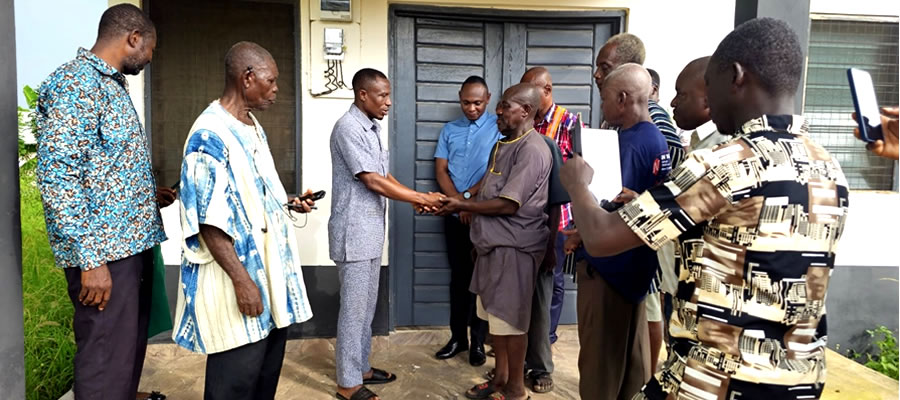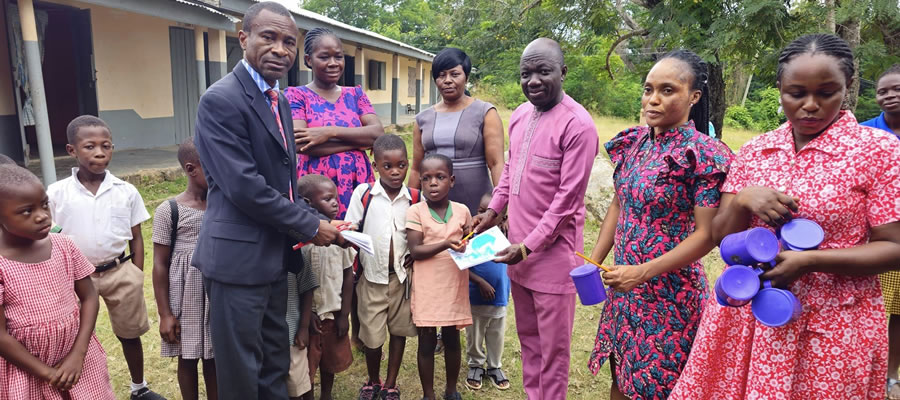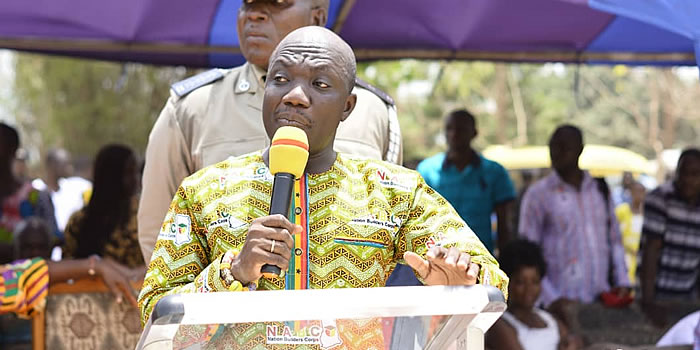

Economy
LOCAL ECONOMIC DEVELOPMENT (LED)
The local economy is powered by the various economic activities in the district and to a large extent our northern neighbor Kpando Municipal which boasts of more economic activities.
As a result of the rural nature of the District and its agrarian some communities can only be accessible on foot and small canoes. The District has made several efforts to reduce poverty for some years now. However, citizens are still faced with high incidence of poverty in spite of the numerous potentials endowed in the district.
The District’s efforts to reduce un-employment is to harness its local potentials hence the idea of the governments flagship programme of “One District One Factory” will go a long to tap and add value to our local resources whiles creating job opportunities.
Challenges for LED
- Absence of electricity.
- Deplorable states of road and tele-communication.
- High illiteracy rate.
- Absence of adequate economic growth strategies.
- Poor entrepreneurial orientation.
- Lack of local level capacity and commitment to provide leadership and direction in policy making.
Strategies to Promote LED
- Identify comparative advantage and competitiveness of localities.
- Build entrepreneurial capacities of SME’s within the District.
- Develop LED strategies and incorporate same into DMTDP.
- Develop entrepreneurial skills. ? Organize individual entrepreneurs into associations facilitate linkages and access to services (financial, marketing, support etc).
Led Opportunities in the District
- Development of various potential tourist and historical sites.
- Establishment of cold storage facilities.
- Encourage commercial rice production.
- Establishment of Arts center for exhibition of various artefacts.
- Promotion of irrigation farming (vegetables). ? Promotion of mechanization centers for commercial farming.
ECONOMY OF THE DISTRICT
Social and Economic Characteristics
Over the past years, considerable effort has been made to improve socio-economic conditions of the people in the district through poverty reduction strategies and other related interventions. However, many still remains to be done and the socio-economic conditions of the majority of the people are still characterized by poverty resulting from income inequality, low living standards and generally poor quality of life.
Access to quality health care, safe drinking water and sanitation is still inadequate especially in the rural areas. There are also major disparities in the social conditions between different segments of the population. Female tend to be worse off than males and rural dwellers also worse off than those in the urban environments. Generally, the lowest living standards are suffered by rural women and children who are very vulnerable.
ANALYSIS OF POVERTY INCIDENCE, DEPTH OF POVERTY AND INEQUALITY
The vulnerable in the District may be seen as people who just manage to organise and sustain their lives within the protection of the existing social system and safety nets offered but who get destabilized with the slightest disruption or disturbance of the social system. Such people unfortunately do not have the in-built capacity to re-organise themselves but rather crumble under the slightest pressure. Groups of the vulnerable that can be identified in the District includes:-
1) Food crops farmers
2) The aged
3) Children
4) People With Disabilities (PWDs)
In general, food crops farmers suffer wide fluctuations in their fortunes depending very much on food crop prices on the market. Food crop prices depend largely on output, which in turn depends on natural rainfall over which the farmer has no control. Any season of bad weather affects the farmers output and hence his / her income whilst on the other hand good weather conditions result in increased aggregate output which lowers prices and reduces rural farm incomes. The smallholder subsistence food crop farmer thus faces the dilemma of price and income fluctuations over which he / she exercises no control.
Within this broad category is the rather common female single parent food crop farmer. The ease with which men abandon their spouses together with their children imposes trying challenges on such single women who have to fend for themselves and their children from such fluctuating and unreliable farm incomes. The chances are always that in a really bad year she loses everything and the family is exposed to starvation and other sufferings.
The Aged – The safety net provided by the extended family system is getting eroded as society transforms towards emphasis on nuclear families. Where the nuclear family is incapable of supporting their aged or with the out-migration of the young for jobs, even where money is transferred to the aged, catering for their own needs becomes a problem. There is the need to institute some support systems to provide a safety net for neglected aged persons.
Children – Child vulnerability manifestation in the District could be traced to parental irresponsibility. Children born outside marriage and children of large families tend to be victims of parental neglect and are called upon to fend for themselves from an early age, opening them up to all manner of dangers and abuse. The most visible abuse of children manifests in the Awate Tornu, Aveme and Wusuta Kpebe areas where children are engaged as workers in the fishing industry.
The most effective remedy to this situation is to strengthen the Department of Social Welfare in undertaking its family and child welfare programmes. To this end a Child Panel and Probation Committee was formed in the district.
The Disabled – The disabled face both physical and social handicaps. Little attention is given to their educational needs as children and further skill acquisition and job placement. Social prejudices remain strong. Yet the disabled operate in the robust competitive open market.
The Department of Social Welfare and Community Development in its quest to ensuring that, persons with disability are well supported to be able to compete in this competitive market embarked on a survey to identify persons with disability in the District. In all 150 persons were identified. This was to enable the District Assembly have a comprehensive database to be able to reach out to these persons with its share of the Disability Fund.
The survey revealed that, majority of these persons in the District does not have any form skill and have consequently been neglected. It is therefore incumbent on the Assembly to ensure that, the capacities of these persons are built so as to husbandly utilize the support that would be given them through the Disability.
White Clay Mining (Geophagic Clay) and processing White Clay business activities are very common scenes in almost all communities in the district. (Mining, cleaning milling, molding drying, bagging and exporting).
Mining: The white clay is mined in the hills all over Anfoega and it is dominated by men using a method that can be described as deep shaft system some as deep as 40 feet with the help of long ladders supported with prop sticks. A vertical tunnel from the top down into the earth to access the mineral. At a depth of concentration deposits, the mine begins to branch out to all directions horizontally some extending to about meters. The mined materials are begged in sacks and passed back to one after the other till it gets to the surface.
Cleaning: The mind clay is spread for cleaning by removing thrush from the pure clay there by making it wholesome.
Milling: The cleaned clay is milled in machines.
Income of households
The District is agrarian, it is therefore expected the majority of households’ income is derived from agriculture. (85 %), basically crop farming and livestock rearing. 7% and (8%) for fishing.
Expenditure Pattern of Household’s
Analysis of expenditure patterns of household’s in the District shows that an average person in District spends 19.5 percent of his income monthly on food and the least which is 1.4 percent is spent on funeral and water. The table below summarizes the expenditure pattern of the people of the District
Table 3.1: Showing Expenditure of the people in the District
Economically active and inactive population
Economically inactive people according to the international labor organization are basically those who are not part of the labor force of an economy. Hence they are neither employed nor unemployed. The economically active people on the other hand are the part of the population of either sex who furnish the supply of labor for the production of economic goods and services. The ratio of former to the latter is known as dependency ratio which gives a measure of the pressure on the productive population and the consequent productivity growth of the economy. Approximately 75% and 25% of the population aged 15-64 years, are economically active and inactive, respectively. This depicts an economic dependency ratio of about 33%, which means that for every 100 persons who are economically active, there are 33 dependents (economically inactive) to be taken care of.
A lower dependency ratio is more likely to increase productivity/growth and vice versa. A rise in the productive population will increase productive capacity and could lead to a higher long run trend rate of economic growth. The North Dayi district can be said to have a low dependency ratio and therefore a decreased burden on the economy as well as the working populace. Nonetheless, there is the need to develop means to increase the productive population in order to further decrease the economic dependency ratio. Figure 1.6 shows percentage of economically active and inactive population in the District.
Occupation (major economic activities in the District)
The major economic activities in the District are grouped into three; service/commerce, agriculture and industrial activities. From the table, the major activities performed under the service category include baking, catering, dressmaking, carving and quarrying. The majority of the population involved in this sector are females; about 70% retail services, trade and craft related works and transportation services. Those under the industry category are cassava and fruit juice processing and saw mill operating services. Under agriculture, about 22% males and 18% females are into farming, livestock rearing and fish farming.
Historical Heritage
North Dayi poses some few historical places. Among them are ; tomb like structure at Afotrokpeta in Wusuta, Old Implements and some foot prints believed to be for settlers centuries ago, a wooden house located in a baobab tree in Vakpo among others.
Revenue source of the District
The major sources of revenue to the Assembly are the District Assembly Common Fund (DACF), District Development Facility (DDF) and Internally Generated Fund (IGF). Other funding sources include donor funds mainly from UNICEF and other GOG transfers. The Assembly is equally awaiting to benefit from governments “One Million Dollars” funds for all constituencies in the country.
Banking Services
The District is serviced by a Bank and Micro-finance institutions that provide credit facilities to the general public. The major financial institution operating in the District now is GN Bank at Vakpo, Dayi Rural Bank and Co-operatives Credit Union all at Anfoega. Moreover, Agricultural Development Bank is renovating a structure at Vakpo to commence their activities. The existence of these commercial entities is to deepen the promotion of commercial activities, offer loans and also encourage savings among the populace.
Date Created : 4/4/2023 6:06:47 AM












 facebook
facebook
 twitter
twitter
 Youtube
Youtube
 +233 593 831 280
+233 593 831 280 0800 430 430
0800 430 430 GPS: GE-231-4383
GPS: GE-231-4383 info@ghanadistricts.com
info@ghanadistricts.com Box GP1044, Accra, Ghana
Box GP1044, Accra, Ghana